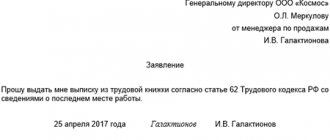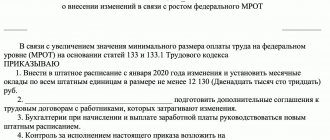Home / Labor Law / Occupational Safety and Health
Back
Published: 04/27/2020
Reading time: 10 min
0
8711
From the beginning of 2020, enterprises that pay to the Social Insurance Fund will be able to compensate for the costs of purchasing safety shoes, workwear and other personal protective equipment (PPE) through injury contributions.
Moreover, only the cost of workwear produced in Russia and from Russian materials is subject to reimbursement.
- Legislative acts Order of the Ministry of Labor of the Russian Federation No. 201n dated April 29, 2016
- Order of the Ministry of Health and Social Development No. 290n dated June 1, 2009
Dear readers! To solve your problem, call hotline 8 or ask a question on the website. It's free.
Ask a Question
What is included in the PPE kit
Shoes, clothing, and a set of professional protective equipment are paid for by the employer in order to protect against contact with adverse factors. The equipment procedure is regulated by the order of the Ministry of Labor, which also approves the standards for issuing suits and shoes. The kit will depend on the application.
There is a procedure for issuing shoes, suits, and personal protective equipment to personnel in accordance with legal requirements. These requirements are enshrined in Art. 221 of the Labor Code of the Russian Federation in relation to specialists of various professions, including those employed in hazardous industries, who perform “dirty” work.
What does the workwear look like?
Who is eligible for free workwear?
Sample order for standards for issuing workwear
PPE standards for professions are determined by law - in the current Labor Code. The grounds for making adjustments to the standard order are internal local acts. It is strictly prohibited for employers to reduce the established standards for issuing PPE. The issuance of suits is possible taking into account the SOUT data - that is, a special labor assessment.
Important! Clothing is provided to all representatives of potentially hazardous production areas.
Requirements for clothing and protective equipment
Any personal protective equipment or clothing and footwear must have a certificate or declaration of conformity with TR CU 019/2011 “On the safety of personal protective equipment.” All standards are set in pieces, pairs and sets on an annual basis. The service life of ordinary and insulated special clothing and footwear, taking into account climatic zones and zones, in Russia contains a list of standard standards for issuing work clothing by profession in Order 997 of the Ministry of Labor. Although one employee has the right to receive one standard of protection every year, it is possible to issue him a double standard at the same time. That is, instead of two sets of suits and shoes for a year, an employee can receive four suits for two years at once. Officials believe that this issuance procedure allows the employer to save money and the employee to correctly distribute things, which will allow them to wear out more slowly.
When and what is issued
Service life of workwear: standards
According to PPE standards, each employer individually informs employees about what and in what cases it issues to them. As a rule, the relevant data is specified in the employment contract. Affiliation with the profession is required. In case of disputes, the parties refer to the current legislation.
IZ means
Standards for issuing PPE
Standard standards for issuing personal protective equipment
The list of PPE for professions and positions will vary depending on the field of activity. For example, mechanics need the following kit for a year:
- rubber boots with toe caps for protection – 1 pair;
- polymer gloves – 12 pairs;
- suit for work – 1 piece;
- glasses - until completely worn out;
- PPE, insulating and filtering – until worn out.
In total, there are 195 professions for which workwear standards are provided. Studying the standards is mandatory in order not to commit violations, because, for example, special suits are needed not only by builders, but also by doctors.
Providing workwear
Personal protective equipment must be selected taking into account the current operating conditions. A storekeeper or consultant is one thing, a laboratory assistant, a landscaping specialist, a janitor, or a driver is another. In this case, climatic ones are added to the industry standards - for working outside in winter, you need warm clothes, shoes, and when performing high-altitude operations - cables, etc.
Wearing period for workwear and shoes - standards for different professions
The legislation determines for which professions, what kind of workwear is issued and for how long. The following is information for specific professions.
Electrician
He is given:
- Jumpsuit made of mixed fabrics (one pair per year).
- Rubber boots (duty kit provided).
- A pair of dielectric gloves is provided. When working, they use a duty kit.
Street cleaner
Provided workwear:
- Cotton work suit. One set is supposed to be issued for one year.
- Rubber boots - one pair is also issued per year.
- Insulated jacket with lining.
- Work gloves (quantity is 6 pairs per year).
- Insulated leather boots (a pair for 2 years).
- Apron with bib 1 set per year.
- Waterproof raincoat - issued one for three years.
Education workers
In this area, employees perform various duties.
In particular, workwear is intended not only for teachers, but also for cooks and kitchen workers, drivers, plumbers and other school employees.
There are specific standards for cleaners, stokers and others.
In addition, teachers of different specialties may need different types of workwear.
For example, a chemistry teacher needs:
- Cotton robe. A duty kit is provided.
- Rubberized apron. They carry a duty copy.
- Latex gloves. Use until they wear out.
- Protective glasses. Worn until worn out. After this, others must be provided.
- Leather slippers. Service life is one year.
- Respirator. Until final wear.
The same security standards are provided for a laboratory assistant working in a chemistry laboratory.
Car drivers
Must be issued:
- A cotton suit (or a suit made of mixed fabrics) to protect against various dirt or mechanical damage. In this case, duty special clothing is used.
- Cotton or knitted gloves with a polymer coating—wearing period—six pairs for one year.
Medical workers
For most medical workers, the following standards for issuing protective clothing apply:
- Medical gowns are provided in the amount of four pieces per two years.
- Headgear (hats or scarves) are also provided in the amount of four pieces for the same period.
- Four towels are provided and the wear limit is 24 months.
The mentioned protective clothing is used until it gets dirty. After that it is changed. And used clothes are sent for washing. Then, after contamination, they are replaced again.
Electrician
The order regulating the provision of special clothing and the terms of its operation specifies several different specialties of electricians.
This:
- electrician for substation maintenance;
- specializing in the repair of distribution networks;
- dealing with security or fire alarms;
- telephone station equipment specialist;
- contact line electrician;
- specialist dealing with power networks and equipment.
Please note: although the general field of activity is energy, in all mentioned cases the specific set of workwear used is indicated.
Let's talk in more detail, for example, about the electrician who works on distribution networks.
For each year he is entitled to the following set of overalls:
- A special suit that was made of heat-resistant materials. It is intended to be used for two years.
- Cape made of the same materials. It has the same shelf life.
- A jacket-shirt made of similar protective materials is also provided, with a shelf life of two years from the date of issue.
- Heat-resistant sweatshirt with the same service life.
- Within one year, it is allowed to issue two sets of heat-resistant underwear.
- An electrician is required to be given special shoes. It has special protective toe caps built into it and a sole that is used in addition to heat resistance and is oil and petrol resistant. These shoes are made from leather.
- Gloves are provided. They are issued in four pairs throughout the year.
- Respiratory protection is provided until wear.
The specified protective clothing is issued in cases where there is a risk of an electric arc.
If this is not expected, then the electrician is issued the following special clothing:
- A suit is provided for a year to protect against dirt and mechanical damage.
- The set includes rubber boots with a protective toe cap. One pair is used per year.
- An electrician receives 12 pairs of polymer-coated gloves for a year. Frequency of use: one pair per month.
- There is also a pair of dot-coated gloves that should be used until they are worn out.
- Gloves that protect against both acid and alkali, rubber dielectric boots, special dielectric gloves are used as duty gloves.
- Protective face shield, respiratory protection and special glasses. All this is used until completely worn out.
Truck drivers
For work they are required to be provided with the following special clothing:
- A suit that can protect against chemical and mechanical influences. This name is given in one copy for a year.
- Polymer coated gloves are required. 6 pieces are issued per year.
Welder
For the welder's work the following is provided:
- A suit with a special fire-retardant filling - 1 piece is given for a year.
- For electric gas welders, a pair of special leather safety boots with a special toe cap made of metal is provided. They protect not only from sparks generated during welding, but also from falling pieces of metal on your leg. One pair of shoes is issued per year.
- For work, canvas gaiters or special mittens are required. One such pair is issued for two months of use.
- Special glasses for eye protection or a shield are provided. Their useful life is until they are worn out and written off.
- A helmet and respiratory protection device must also be provided (usually a Lepestok brand respirator is used). They are used until wear occurs.
- In addition to the above, the standard stipulates that the welder must wear a second class signal vest.
How to provide PPE
Personal protective equipment must have the certificates required by law and comply with current standards. General requirements and standards must be taken into account. PPE items to provide support specialists, workers, catering staff, and vehicle drivers must be issued on time in full. It is possible to issue a double set.
Important! The law will allow employees to be issued double sets of PPE. This will allow them to correctly distribute protective equipment and help optimize financial costs.
Service life of kits for the construction industry
Accounting for workwear is regulated by an order of the Ministry of Finance of the Russian Federation. The general list of documentation is determined by paragraph 5 - it obliges employers to issue clothing, shoes, and some special equipment to builders. The specific needs of enterprises are determined individually; it is necessary to take into account the timing of replacement of the kit.
An individual set of protection for builders is issued by card, taking into account inter-industry standards. Write-off of protective equipment in construction, as in agriculture, housing and communal services, is carried out after 12 months linearly or within the first year after issue. A year is the useful life or average time of use of the kits.
Good to know! In some cases, enterprises can independently extend the terms of wearing workwear and shoes. This must be done taking into account the results of the SOUT examination; replacements are permissible only in agreement with the state inspector.
To approve its own internal standards, the employer should adopt an order or other instruction and enter the required values into local regulations at the enterprise. As part of establishing your own indicators that differ from the normative ones, you cannot reduce the number of units set for write-off.
Norms
Write-off of sets of workwear in the field of tax accounting is carried out on the financial resources of the enterprise on the day the set is transferred to the employee or in equal amounts within the period of the personal investment account. The selected methods must be fixed in the accounting policies of the organization.
The legislative framework
At the legislative level, specific standards for the provision of PPE are clearly defined depending on a particular profession in almost all areas of work:
- mining;
- manufacturing industries;
- construction;
- Agriculture;
- transport;
- mechanical engineering;
- education, science.
In each of these areas, standards are regulated by orders of the relevant Ministries - mainly the Ministry of Labor and the Ministry of Health and Social Development.
Responsibility for refusal to use PPE
According to the points of the standard standards, when the provision of PPE is centrally carried out in full, but employees refuse to use them, the employer is obliged to limit access to the performance of current job duties until the issue is resolved. At first, a warning is enough; if the violation remains, the employee can be subject to disciplinary action.
Legislative regulations, in accordance with the provisions of Article 221 of the Labor Code of the Russian Federation, oblige the use of PPE - shoes, clothing, accessories - when performing operations at dangerous, harmful objects, under extreme thermal conditions. The funds must be provided free of charge, have certificates, and meet standard standards.
Important! The employee is obliged to comply with all safety and labor protection requirements. You can familiarize yourself with them according to the instructions and rules.
Mandatory requirements for the use, issuance, retention, and keeping of special clothing clean establish intersectoral rules for providing employees with special clothing, footwear, and other protective equipment. The rules for providing employees with personal protective equipment, under a rental agreement or otherwise, are carried out taking into account standard standards at points for free issuance. PPE must undergo a certification or declaration of conformity procedure. Without them, they are not allowed for use.
Work clothes
Clause 26 of the Rules for ensuring mandatory use by employees of the organization relates to the powers of the owner - boss, employer. Employees are not allowed to carry out work without PPE, and clothing and other equipment must not be dirty or faulty. That is, an employee whose professional field of activity is regulated by standard standards must use an established set of PPE. If an employee refuses to follow the regulations, he is removed from his duties. The corresponding requirement is specified in the Labor Code.
Important! It is the employer who controls compliance with established requirements. If he allows an employee to pass without PPE, he himself will bear responsibility. The main preventive measure is disciplinary.
Employees who refuse to receive PPE are subject to disciplinary action under Article 192 of the Labor Code of the Russian Federation for failure to perform or improper performance of duties. Employers are punished for failure to comply with labor safety requirements according to regulations and for failure to provide PPE.
Basic moments
In accordance with labor safety requirements, employers are required to provide employees with personal protective equipment, special clothing and footwear.
But such equipment is only available to representatives of certain professions. The procedure for issuing, types and quantities of workwear are determined by Interindustry Standards.
According to the standards, workers whose work involves unfavorable conditions need to be provided with overalls.
In particular, during the performance of work activities there is an impact on:
- negatively affecting people due to temperature conditions;
- associated with air and skin pollution;
- causing harm to health.
For example, representatives of such professions as mechanics, plasterers, masons, etc. are required to wear special clothing.
To determine the need for protective equipment, a work environment assessment must be conducted every five years to assess working conditions.
The list of professions for which special clothing is required is approved by the Resolutions of the Ministry of Labor and the Ministry of Social Development of the Russian Federation.
Temporary workers who start work for which special clothing is required receive “special clothing” on the same basis as permanent employees.
Upon completion of the work, if the service life of the clothing has not expired, it is returned to the employer.
The standard standards provide for the provision of workwear to workers in 195 professions found in various economic sectors.
Cross-cutting professions require the receipt of specific sets of workwear. Moreover, the wearing period will certainly be specified.
The employer has the right to change existing standards for the issuance of workwear. But it is prohibited to tighten the current operating conditions for PPE or reduce standards.
What it is
Workwear is personal protective equipment (PPE). It was developed to protect workers and ensure safety during work activities.
The overalls must ensure the prevention of damage to the health of employees if work functions can provoke harm.
It is important to distinguish between uniforms and workwear. The purpose of wearing a uniform is to comply with corporate culture and unify the appearance of employees.
Workwear differs from uniforms in that:
| It is mandatory to wear it | While the uniform may be ignored |
| Wearing uniforms is established by internal regulations | And the use of special clothing is defined at the federal level |
| Employees can purchase branded clothing at their own expense. | And work clothes are provided by the employer |
| For uniform basic | It is a demonstration function, and for workwear it is a protective function. |
| Uniforms are a means of unification | And workwear is personal protective equipment |
What is their purpose
The classification of PPE is established by GOST 12.4.011-89. All protective equipment, based on their purpose, is divided into 11 classes, which are divided into types according to design.
According to the norms of the Technical Regulations, workwear is classified as:
| Protective equipment of simple design | For work with minimal risks - first class |
| Complex design protective equipment | For work in conditions that can cause irreparable harm to health - second class |
Depending on the class, the purpose of protective clothing may be to protect against:
- mechanical impact;
- high or low temperature;
- X-ray and radioactive radiation;
- non-toxic dust and toxic substances;
- electromagnetic and electric fields;
- acids and petroleum products;
- biological threats;
- general industrial pollution.
Thus, the bus driver is provided with a suit to protect against mechanical and external contamination, gloves, and sometimes it is possible to be provided with special shoes.
Workwear in medical organizations consists of sanitary clothing and gloves. The stoker must receive protective trousers with a jacket or suit, rubber boots, safety glasses and gloves.
Regulatory regulation
The obligation of employers to provide workers with PPE is established by Article 221 of the Labor Code of the Russian Federation.
The rules for providing protective equipment, the procedure for issuing, using and maintaining protective devices are set out in Order of the Ministry of Health and Social Development No. 290n dated June 1, 2009.
Requirements for protective equipment are given in the Technical Regulations of the Customs Union No. 878 dated December 9, 2011 “On the safety of PPE.”
Specific lists of PPE are indicated in the Standard Standards for the free issuance of PPE, adopted by Order of the Ministry of Labor of Russia No. 997n dated December 9, 2014. This document is also valid in 2020.
Employers should be guided by its provisions when purchasing PPE. The standard has 14 sections and here the standards for issuing workwear, the procedure for provision, distribution limits, and specifics by profession are described in detail.
Order of the Ministry of Labor of Russia No. 201n dated April 29, 2016 establishes that starting from 2020, reimbursement of costs for personal protective equipment at the expense of the Social Insurance Fund can only be claimed in relation to products produced in Russia.
At personal expense, the employer has the right to buy foreign-made personal protective equipment.
What kind of failure will happen?
If the head of the organization has not provided the employee with free protective equipment, the employee may refuse to perform work. In accordance with the norms of the Code of Administrative Offenses of the Russian Federation, liability is provided for violation of current labor protection requirements. Type of liability – fine. Its dimensions:
- 20-30 thousand rubles for individual entrepreneurs and officials per employee;
- 130-150 thousand rubles for one employee who is not provided with a set of personal protective equipment.
For repeated violations, the sanctions become more severe. Possible options are fines in the amount of 200 thousand rubles, termination of activities for 90 days or more.
Mask
Legal basis
Information on the standards for issuing PPE is enshrined in the orders of the Ministry of Labor and the Ministry of Health and Social Development. Separately, the terms and rules of security are regulated by legal acts. The Russian Federation has a wide range of documentation at all levels (from industry to federal). Separate laws apply to forestry, agriculture, mining, transport, construction, trade and industrial processing, metallurgy, education, and science.
Important! In addition to the general regulations established by the laws of the Russian Federation, there are internal ones. Organizations prescribe it in internal regulations.
Workers must be provided with personal protective equipment centrally, and the kits are regularly replaced. How PPE is issued at the enterprise, regulatory documents of 2020, and other aspects of this area of labor protection require careful study. In any case, different types of liability are provided for the refusal to issue a uniform by management or the refusal of employees to wear it.
Documents on the standards for issuing workwear
The rules for providing workwear are determined by the following documents:
- Order of the Ministry of Labor No. 997n for workers belonging to cross-cutting professions. You can view it at the link: https://www.consultant.ru/document/cons_doc_LAW_175841/.
- Order of the Ministry of Health and Social Development No. 297 for signal protective clothing. Located at https://www.consultant.ru/document/cons_doc_LAW_60881/.
- Resolution of the Ministry of Labor No. 70, which relates to the provision of warm workwear. You can view it at https://www.consultant.ru/document/cons_doc_LAW_69046/.
- Special clothing for working in difficult and dangerous conditions is provided on the basis of Order of the Ministry of Social Health and Social Development No. 357n. You can read it here https://ohranatruda.ru/ot_biblio/norma/251718/.
- Order of the Ministry of Social Health and Social Development No. 1104n. Follow the link https://www.norm-load.ru/SNiP/Data1/60/60180/.
- Order of the Ministry of Social Health and Social Development No. 543n https://www.norm-load.ru/SNiP/Data1/60/60180/ regulates the issuance of special clothing to employees of housing maintenance services.
- How to issue protective clothing to workers in construction - the standards are determined by Order 477n of the Ministry of Social Health and Social Development. You can find it at the link: https://www.gosthelp.ru/text/Prikaz477Tipovyenormybesp.html.
- Order of the Ministry of Social Health and Social Development No. 290n. (https://ohranatruda.ru/ot_biblio/norma/251657/).
Labor protection legislation contains more detailed requirements regulating the provision of workwear.












